Resources
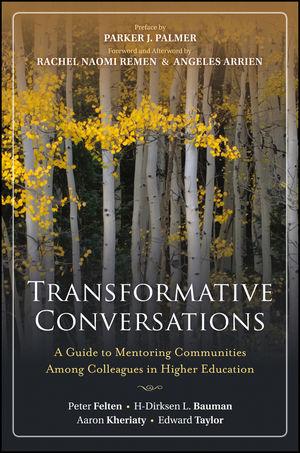
This book stands out for its simplicity of style, transparency of voice, and modesty of ambition. It makes an argument about the power of intentional “mentoring communities,” composed of peers at different stages of career. The authors ground the argument in their experience participating in such a community under the auspices of the Fetzer Institute and also organizing and participating in mentoring communities on their own campuses over a two-year period. Their conclusion: mentoring communities, by supporting and challenging their members to “identify and reconnect to their core values, revitalize their individual dreams, and renew their commitment to goals that serve as the foundation for their work and their lives,” help their members orient their choices and creative projects around their deep purposes and values, and so animate, from within the group, reform in higher education (5-6, 31, 87-88). The authors demonstrate what too few believe: that the solution to what ails higher education, in no small part, lies within the people whose vocation it is to teach and support students’ learning. The transparency of their reporting and reflection on experience lends credibility to the authors’ argument – they “show” far more than they “tell.” The authors refreshingly avoid both indulgence in lament and speculative grand proposals. In language free from jargon yet saturated with the vibrancy of lived experience, they provide a readily accessible “how to” for initiating mentoring communities. These are decidedly not committees, which have “institutional mandate[s] and goals,” or therapeutic groups – which focus on “participants’ emotional wounds and disorders” (20-21). Rather, they are groups of four-to-six colleagues who commit to mutual mentoring, with the intention of helping “participants explore, form, articulate, and live out of their values” (21). The groups focus on “strengths and virtues” not “wounds and weaknesses” (21). The authors refer to these communities as “formation mentoring communities,” using the term “formation” to highlight the orientation around helping members develop as whole persons, cultivate “shared human capacities,” and advance “each person’s particular gifts and talents” (14-15). This slim volume is a superb guide to preparing groups to enter into and sustain serious conversation. In four short chapters the authors describe mentoring communities, elaborate on the practice of conversation, explain how to organize a mentoring community, and illustrate how to do collaborative leadership in the groups. In the last chapter they argue for the centrality of such communities to any serious institutional change in higher education. The authors also provide a rich bibliography of resources on education, convening and facilitating, dialogue and conversation, formation and spiritual direction, mentoring, and community. While not directed explicitly to theological education or religious studies in the liberal arts, deans, department and program heads, and faculty in these settings should read this book. It will provoke thinking regarding and offer strategies to those desirous of welcoming new colleagues into institutions; those wanting to provide better support for colleagues contemplating the next phase in career or life; those wanting to support graduate students; and those concerned with how to compose more satisfying, sustainable, meaning or purpose-anchored lives across the career span.
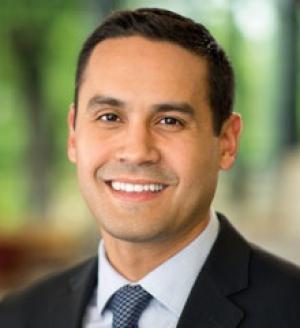
Eric Barreto, Kate Blanchard and Roger Nam This holiday week, we thought we’d share some of our favorite places where we get stuff done: grading, class prep, research, administrative tasks, service projects, grants and even some occasional writing! Roger: Back home at George Fox University, I rarely do more than grab a book or journal in the...
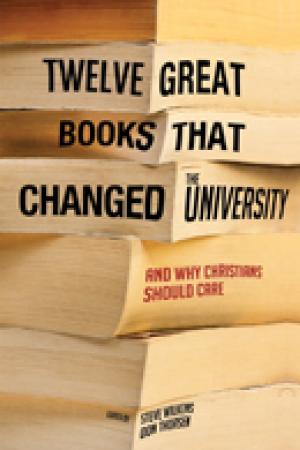
Amid the fragmentation of both academic and civil discourse, this book audaciously seeks unity through the Christian liberal arts, or at least through Christian assessment of what was considered “liberal arts.” Wilkens, Thorsen, and their contributors -- all of whom teach at Azusa Pacific University -- offer Christian readings of classic texts that have exerted wide-ranging influence over the Western canon. The texts include those written by Plato, Augustine, Bacon, Shakespeare, Cervantes, Smith, Freud, Dewey, and, yes, even Darwin. While at first glance perhaps too traditional, this book provides several avenues for both spiritual and professional reflection. Tertullian aside, this book demonstrates that Athens and Jerusalem do share common ground. Wilkens acknowledges that things are not what they were. His introductory chapter addresses the book’s intellectual foundations. The university itself emerges from the twin springs of Christian theology and Greco-Roman philosophy. Therefore the book’s Christian interpretation flows from the original nature of academic life itself. However, Wilkens notes, “while the unity of knowledge was assumed throughout most of Western history, knowledge has now become fragmented and siloed” (11). Curricular fragmentation makes the unifying task of education all the more difficult. Pressure to shape students in marketable disciplines compounds the intellectual disintegration. Educating students to become good employees further subverts more traditional goals of pursuing the good and gaining an intellectual appreciation of the Christian tradition. Academic success no longer recognizes Christian religious maturity as a measurable or desirable outcome. That exclusion has not eliminated the human need (not merely desire) to learn and know both skills and meaning (1). Education cannot be limited to merely technical endeavors. These struggles in part explain why the contributors made their particular choices. The “great books” admittedly were written by white males but those, Wilkens argues, have exerted the greatest, if not the most recent, influence on the university (13). Christian scholars remain free to negotiate this legacy in their respective disciplines. Theology receives its due from Thorsen’s own chapter on Augustine’s Confessions (36-49). After a content review, Thorsen ably addresses Augustine’s autobiography. It remains one of the few Christian texts still read across disciplinary lines. Perhaps the only thing missing here is a justification for not including The City of God. Others offer similarly talented studies, such as Joshua Morris’ reading of Darwin (137-53) and Theresa Clement Tisdale’s assessment of Freud (154-73). The typical scholarly response might tilt toward dismissiveness. After all, fragmentation is indeed part of academic reality. Wilkens acknowledges this, suggesting that the book could be read chronologically (Plato to Dewey) or by individual chapters to gauge a text’s particular impact (16). No companion course exists where these texts comprise the curriculum, so readers are free to integrate or “silo” as they see fit. Given Azusa Pacific’s confessional identity (evangelical Christian), a parallel volume by Catholic scholars on the same sources might make an interesting follow-up. In an age dominated by assessment rubrics, Twelve Great Books reasserts in quick and clean fashion the older, more radical, identity of academic endeavor.
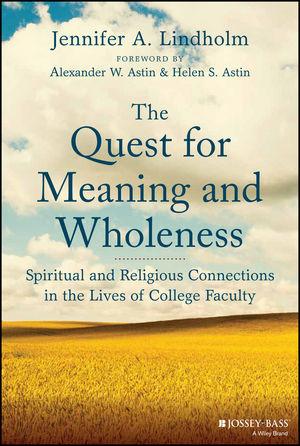
Jennifer A. Lindholm begins her work on the spiritual proclivities and religious perspectives of college faculty in the United States by noting that they teach in a “spiritually engaged nation” where nine in ten adults profess belief in God or a Universal Spirit (1). Religion is ubiquitous in American life – 80 percent of Americans consider religion as important to their lives – but it is also a complex and contested matter that fosters community and generates conflict across the country. Although college students are no different than other Americans in their spiritual and religious seeking – three in four college students are “searching for meaning and purpose in life” – Lindholm argues that they are not receiving sufficient instruction and mentoring from their professors. Two-thirds of college students report that their professors “never” encourage discussion of religious topics and nearly half are dissatisfied with how their college experience has provided opportunities for spiritual reflection (212). Yet Lindholm astutely demonstrates that college professors are no less spiritual or religious than their students. Drawing upon a 2012 survey of 8,447 tenured and tenure-track faculty from 264 diverse colleges and universities, the author finds that 19 percent of faculty self-identify as “not spiritual and not religious,” a figure only four percentage points higher than the general American population (50). Students are still disappointed in the lack of religious dialogue on their campuses in part because their professors experience competing tensions in their own attempts to incorporate their spiritual and religious lives into their work. In the second chapter, Lindholm uses faculty perspectives to provide helpful delineations of what is meant by self-identifying as “spiritual” or “religious.” She interprets her data in the following five chapters to illumine the substantial challenges faculty face when seeking to connect the spiritual and religious dimensions of their lives in the academy. Although faculty who are able to freely and openly express their spirituality are “more likely to view themselves as being authentic in their work and personal lives,” respondents often stated that they encountered overt hostility in the form of religious discrimination from colleagues and stumbled over more subtle obstacles like institutional expectations to be available to work on weekends (ix). One of the many fascinating points in Lindholm’s study shows how faculty from all faiths and in every kind of educational institution – public, private, and religious – experience these tensions. Evangelical faculty at public schools reported the highest levels of occasional discrimination (39 percent), but faculty from other religious traditions, such as Buddhism, Islam, and progressive Christianity, explained how they felt no less like outsiders at work (126-146). Lindholm accomplishes her primary purpose successfully and presents a rich, data-based account of the spiritual and religious lives of college faculty in the United States, and also articulates several cogent and compelling prescriptions to create “valued space for the spirit within the academy” so professors and their students can more fully connect higher education with human wholeness (216). Theological educators will also benefit from this book. Lindholm’s call for greater consideration of spiritual and religious diversity within the scope of collegiate intercultural development applies equally to seminaries with student bodies that are increasingly becoming more ethnically, racially, and theologically diverse.
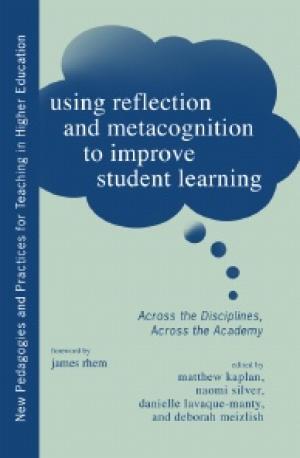
This collection of essays has its origins in a three-year research project at the University of Michigan (funded by the Teagle and Spencer foundations), which intends to find ways to improve undergraduate education by developing “targeted, exportable classroom strategies to help bridge the gap between students’ and faculty’s (or novices’ and experts’) understanding of disciplinary writing and thinking” (2). Based on research that recognizes metacognition as “most important to good learning outcomes” (2), this collection explores whether disciplinary metacognitive strategies will assist students “to better connect diverse disciplinary writing tasks and develop more versatile identities as disciplinary writers” (3). To that end, they include essays on the use of metacognition in several different disciplines: biology, engineering, mathematics, psychology, humanities, and composition. They conclude that both “student and faculty engagement with course material and writing tasks is resoundingly improved by the introduction of metacognitive strategies” (3). The basic premise upon which this collection rests is that people can learn how to learn. This generally takes two forms. In the first, students might be asked to “reflect” on their learning, by attending to their discomfort, ambiguity, and uncertainty, and revisiting a learning experience again and again in order to discover new insights and a more sophisticated understanding (6). In the second, students might engage metacognition (thinking about thinking): they establish a plan to learn (for example, make predictions, set aside sufficient time, gather appropriate resources, and decide which approach will be most efficient based on experience), monitor their learning (with self-tests, for example), and evaluate success (their ability to recall the idea a week later). Attention to metacognition facilitates students’ ability to transfer understanding across disciplines. Teachers in religion and theology might be particularly interested in a number of immediately useable teaching strategies. Consider “exam wrappers”: after giving a test, ask students to describe how they prepared for it; collect their responses, and return them as they begin to prepare for the next test. In this way, students can monitor and evaluate their learning and give their “future selves some advice” (24). Or invite students to monitor their thinking by including comments in the margins on their writing assignments; for example, they might say, “I am not sure I understood how these two ideas connect,” or “I think I have this correctly stated but I may have to check my facts” (122). Or consider inviting students to design a fifteen-week project using a template to identify purpose, audience, context, genre, media, and arrangement strategy; this type of assignment encourages students to make deliberate rhetorical choices and to revise both their design and their product iteratively. Or try this: invite students to “repurpose” their content knowledge in alternative formats (written page, presentation, image, video, blogging, and so forth) in order to develop skills as emerging experts in their profession (178). Each essay provides concrete, practical descriptions of how reflection and metacognition can be used in different disciplines, with abundant samples of assignments, templates, surveys, and student examples.
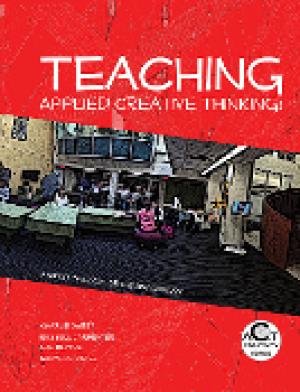
The “new pedagogy” offered here is an integration of educational theory, common-sense pedagogy, and the authors’ own experiences in applying a different way of teaching and learning. The particular focus of the book is on teaching “applied creative thinking” to the teaching and learning process. The 168-page book -- in workbook format -- has twenty-five short chapters, so readers should not expect deep coverage of the varied topics reviewed. Chapters I through XI (some as short as three pages) present core ideas of the pedagogical model. Chapters XII through XX present sketches of nine specific teaching strategies. The authors offer a creative thinking pedagogy applicable across subject matters. They borrow from Holbert and Taylor’s definition of pedagogy as “intentional teaching, that is, the embodiment of principles in practice” which entails a combination of theory and praxis (4). The new pedagogy the authors propose is essentially a reframing of the teacher’s role as “Mentor-from-the-Middle” (borrowed from the work of Erica McWilliam) in a learning context (physical and attitudinal) that will help make the shift from a teacher-centered to a learner-focused pedagogy in order to foster creative thinking as both process and outcome. Of necessity, agency for learning requires a shift in the center of authority from teacher to student in order to facilitate self-directed learning. A “Key Concept” of Chapter VIII, “The Meddler-in-the-Middle is a theory that is difficult to translate into practice” is not encouraging (48). Their response to this challenge is to reframe the Meddler-in-the-Middle approach using the metaphor “Mentoring-from-the-Middle” as a “new paradigm.” The new paradigm replicates established educator roles and reframes the function of the teacher under the metaphor of Mentor-from-the-Middle. In this model the teacher assumes the roles of scholar, mentor, facilitator, coach, model, and critical reflector. These roles in turn, purportedly, combine to help transform the learner into an active creative thinker. Aside from helping to facilitate the shift away from a teacher-centered pedagogy, how this reframing of the teacher’s role translates into students becoming “active creative thinkers” is not explicated satisfactorily. Following the shift in the teaching role, the authors present a structure for the learning experience. They organize the learning experience into six phases: information gathering, crystallizing, creating the project, completing the project, skill-making, and evaluating the learning unit. This scaffolded constructivist approach to structuring the learning experience, coupled with a shift in the teacher’s place in the classroom environment (moving from the front of the classroom to the middle of the classroom, among the learners) represents the book’s new pedagogy. The parts of the book that specifically address the ways creativity is fostered speak to the importance of the setting (environment) for learning (Chapter V), some portions of Chapter VII summarizing insights from neuropsychology, and Chapters XII through XXI which present sketches of nine specific creative teaching strategies (including mainstays such as brainstorming, collaboration, pattern recognition, metaphors, crossword puzzles, and video games). The chapter on instructional technology (Chapter VI) could have been left out as it added little substance to the matter of creative thinking, nor did it advance new ideas about the use or impact of instructional technology on teaching and learning, or particularly, on creativity. This is not a poor book, but it is also not a great one. The authors overpromise on a “new” pedagogy for the twenty-first century, but do offer a sound model that reflects a helpful shift in the role of the teacher, a particular model for organizing the learning experience, and responsible attention to studies in relevant fields that can inform effective educational practice.
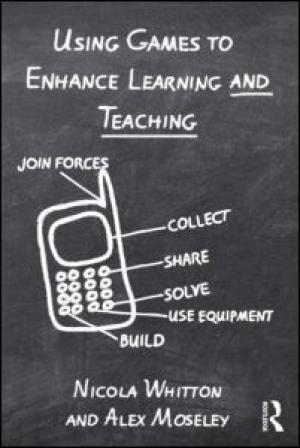
In her Teaching Theology & Religion review of Nicola Whitton’s Learning with Digital Games: A Practical Guide to Engaging Students in Higher Education, Rachel Wagner observed that the book “offers general advice for those brave enough to write their own games for educational use, but the book is not, nor does it claim to be, a handbook on how to produce video games” (Teaching Theology & Religion 15, no. 1: 91). Whitton’s newer co-edited collection with Alex Moseley, presumably, is intended to be that handbook, though many of its initial chapters seem to replicate Witton’s original call for more educators to take an interest in game pedagogy and put some investment in games for the secondary and post-secondary classroom. From there, the book offers the fundamentals, from the rudimentary to the quite advanced, but breaks it into such discrete units that a certain degree of disconnect forms between the separately useful entries. Whereas an entire chapter, co-written by Whitton and Dave White, did not need to be dedicated to “Narrative” (such as explaining what conflict or plot is), other sections, like “Mapping Games to Curricula” by Moseley and Rosie Jones, could have been given more page space to explore their complexities. In fact, the collection does offer real-life case studies of games developed for and attempted in the classroom, but their lack of variety in terms of academic disciplines disappoints; [in]visible Belfast and ViolaQuest are marvelous examples of games-based education promoting the literary exploration of a city and the social orientation of students to the wider campus community, respectively, but, in as much as they document successes in this form, they do not suggest how to replicate it in other fields. Perhaps the most useful portions of the collection for instructors of religion or theology come from two altogether different approaches within its covers. The chapter with the clearest ready-made step-by-step process or blueprint for game development is Simon Brookes and Moseley’s primer on constructing authentic learning activities (ALA) across what they term “the reality gap” of the game and the classroom (94, 96). Though editors Whitton and Moseley have their own chapter on design considerations, Brookes and Moseley’s discussion includes and exceeds the editors’ clear preference for Alternate Reality Games (ARGs) where a blend of real-world technologies lead students through a semi-fictional narrative toward the game’s learning objectives. While the thrill of an ARG can be contagious, chapters like Brookes and Moseley’s will still benefit the instructor-reader who is not yet ready to take such an intensive, immersive plunge. Sarah Smith-Robbins delivers the other superlative chapter, a highly theoretical but ultimately rewarding consideration of virtual worlds’ utility for learning. True to Whitton’s early warnings to “scaffold” games so that they move from easy to harder to then still-harder tasks, Smith-Robbin’s chapter is reserved until close to the end, a quantum leap into Activity Theory and Game Ecology Models from the rudimentary material on quantified competition (such as “pointsification”) or multimedia options that form the initial foundation of the book. It seems highly unlikely, however, that the reader who began with those would “level up” to Smith Robbins’s discourse. Using Games to Enhance Learning and Teaching is an impassioned, valuable book, entirely worthy of educators’ consideration, as are games for educational purposes overall. The collection can easily be likened to some of the most popular games available, with many playing them simply to complete them and not to uncover their every secret. Likewise, most educators will find the book more valuable for its constituent pieces rather than its entire whole.
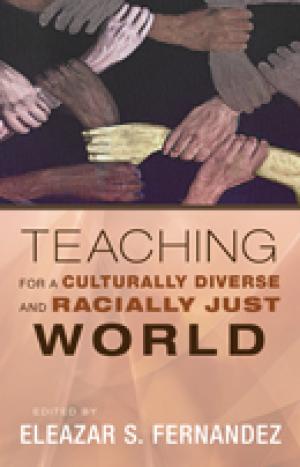
Eleazar S. Fernandez’s edited volume, Teaching for a Culturally Diverse and Racially Just World, brings together important voices in the study of religion and theology to explore issues surrounding racial-ethnic minority scholars. Fernandez writes that “‘marked’ identities” present challenges in all aspects of a scholarly career, from the classroom and research and publication to administration and institutional policy-making (2) and that even as racial-ethic minority scholars make great strides, the “racist system is cunning enough to do countermoves” (3). Willie James Jennings summarizes the crucial issue: “These teachers are measured against simulacrums, images of white male teachers, images of what women teachers ought to be, images of what minority teachers ought to be, and assumptions about which ideas and concepts should matter to women and minorities and which ideas and concepts are the proper domains of white men” (119), as David Maldonado, Jr. shows us the constraints and possibilities faced by racial-ethnic minorities across the institutional spectrum, including those in leadership positions. The purpose of this volume is not to complain, however, but to be constructive: it asks how institutions can re-form themselves, set “benchmarks” (4) to support racial-ethnic diversity, and, thereby, flourish.Two strategies characterize the volume. First, it deploys metaphors to help the reader to understand, even to experience, the positionality of the racial-ethnic scholar. For example, Jennings presents modern theological education as “the master’s house built exclusively for his sons” (109), while Loida I. Martell-Otero and Elizabeth Conde-Frazier use spatial metaphors to talk about “teacher space” and where our teaching takes place, respectively. With these metaphors, the volume asks what it means to work and to learn as “foreign bodies” in such places: what does it mean to be both at war and yet in love with our disciplines? The volume does not forget students; Peter Cha uses the metaphor of Martin Luther King, Jr.’s “Beloved Community” to think through the experience of racial-ethnic students in theological education. The volume asks us to think metaphorically in our assessment as well; it uses, for example, the vocational cycle as a way of thinking through justice work.A second strategy that characterizes the volume is the inclusion of the voices of allies. Paul O. Myhre and Nancy Ramsay offer valuable strategies and insights as two Euro-American colleagues who have accepted, as Ramsay puts it, “the pervasive influence of white supremacy and the recognition of the self-interested imperative for allies to leverage our privilege on behalf of institutional formation” (251). Using the metaphor of vision, Myhre asks us to expand our vision to see racism not as a singularity for racial-ethnic scholars but in its contexts, and to use the power of discernment to decide how to address the problem justly.This very important volume includes contributions from many stellar teachers. Though it focuses on theological education primarily, it is valuable for religious studies. Its range − from the location of the scholar, to students, to administration, to issues of assessment − is wide, but deftly handled. It is both theoretical and practical, making it a work one can mine for different kinds of insights. The volume asks for alliances that generate small but significant steps. As Fernandez puts it: “Small beginnings should not intimidate us. We must remember that we are not called to everything, but we are called to do something” (20).
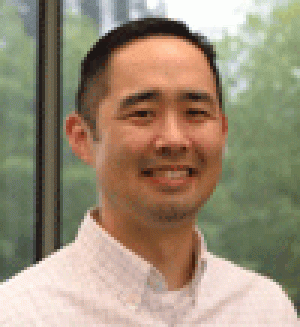
Roger S. Nam It’s that time of year. Yes, it’s the season where professors often find themselves dealing with breaches of academic integrity. The explosion of online learning, alongside everyone’s massively expanded access to information, has further complicated this issue. Exhausted professors, I’ve got a special holiday gift for you:...
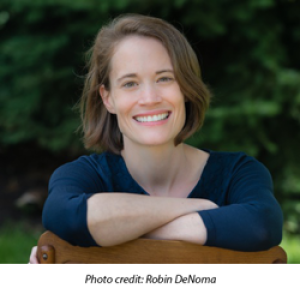
Elisabeth T. Vasko Ph.D. Assistant Professor of Theology Duquesne University In recent years, I have taught an upper-level Christology course in which we examine race, gender, and power. Sometimes my students register their dissatisfaction with reading Christology from the margins (James Cone, Kelly Brown Douglas, and Marcella Althaus-Reid) instead of the center (Anselm, Barth, von Balthasar, and Rahner). I can understand their frustration and discomfort. In the classroom, I make an effort to accept it and to take it seriously. I should also note that I teach at a university where the student population is mostly white. By and large,